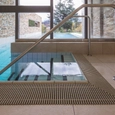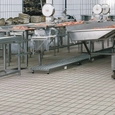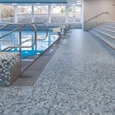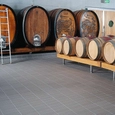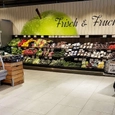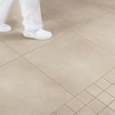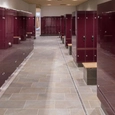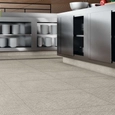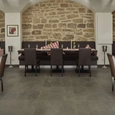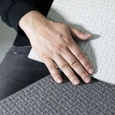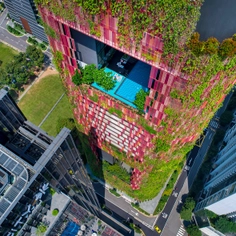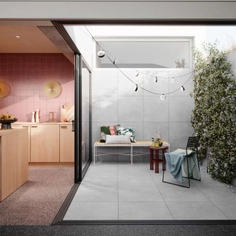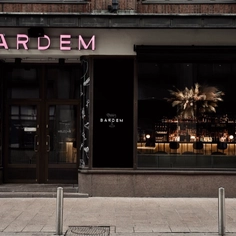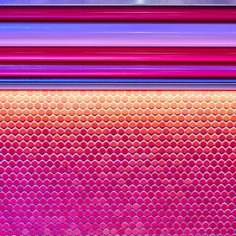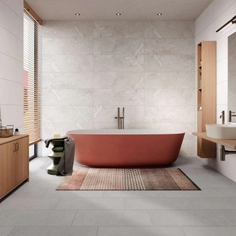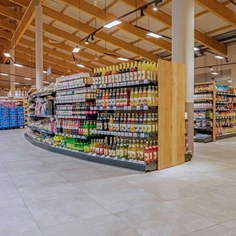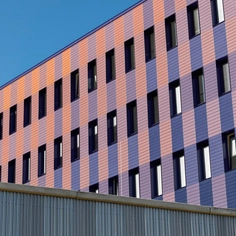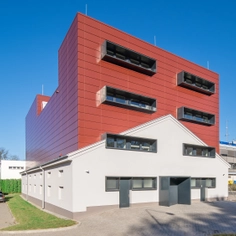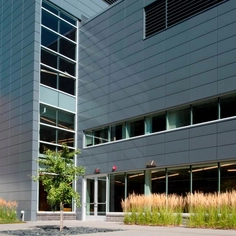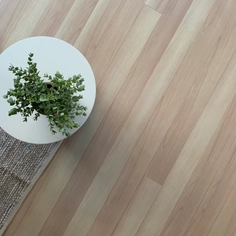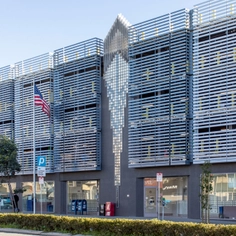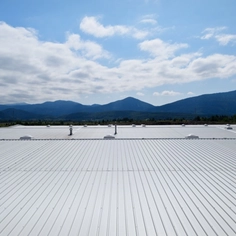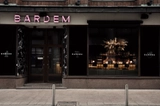Falling is the most frequent accident for most companies and facilities. The German Workplace Ordinance and Accident Prevention Regulations demand that floors are even, non-slip, and easy to clean (this is best-practice, all over the world). Especially in areas where there is a risk of slipping due to water, oil, sludge, grease or waste, special protective measures to prevent slipping must be taken. This must be considered when selecting flooring materials such as floor tiles.
AGROB BUCHTAL offers non-slip ceramic tiles in different grades. In order to understand which one you need for your project, read up on slip resistance below:
Step 1. Understanding Slip Resistance
How is Slip Resistance Measured?
Test at "Inclined Plane"
The degree of slip resistance of a material is measured using the 'walk-on procedure' whereby a test person walks over the material on an inclined plane with an adjustable angle of inclination.
Commercial Areas:
| Assessment groups | Angle of inclination |
| R9 | >6°-10°
low coefficient of adhesion |
| R10 | >10°-19°
normal coefficient of adhesion |
| R11 | >19°-27°
increased coefficient of adhesion |
| R12 | >27°-35°
high coefficient of adhesion |
| R13 | >35°
very high coefficient of adhesion |
Barefoot Areas:
| Assessment groups | Angle of inclination |
| A | ≥12° |
| B | ≥18° |
| C | ≥24° |
The angles of inclination exclusively serve towards allocation to the assessment groups and are not equivalent to the angles of inclination displayed by slopes/ramps!
How is Slip Resistance classified?
Slip resistance is divided into evaluation groups based on the use of the area.
Commercial areas:
In commercial areas, one of five groups is assigned, from the least slippery group R9 up to R13. Where work-rooms with lubricating materials are involved, it is not enough to only have an even, non-slip surface; a displacement space must also be created under the walking level. The displacement space is an open cavity between the upper walking and drainage level in the case of profiled surfaces. Groups range from V4 up to V10.
Barefoot areas:
Wet barefoot areas are distinguished by the fact that these areas are usually wet and walked on while barefoot. Steps and ladders are also floorings. Wet barefoot areas can be found in bathrooms, hospitals and changing, washing and shower areas in sports and working facilities as well as throughout swimming pool facilities.In barefoot areas, groups range from A to C.
Once you have a classification for your area, it is easy to find slip-resistant floor coverings that are tested and classified accordingly.
Step 2. Find the Group for Your Area
With an understanding of slip resistance and its importance, the next step is to check which assessment group to use for the floor you are designing:
In a detailed table, the required valuation groups are assigned to work areas where there is a high risk of slipping. Information is available from Deutsche Gesetzliche Unfallversicherung and AGROB BUCHTAL (please see supplementary files).
Step 3. Choose a Finish
Once you know which slip resistance works best for the area, the final step is selecting the look of the floor within the range of materials at that slip resistance grade.
The Grid Surface
The Grid Surface is a special anti-slip surface developed in cooperation with the German designer Sebastian Herkner. Searching for a design that looks spontaneous and yet has a certain logic, he came up with repeating trapezoidal rectangles in a pattern that can be continued in all four directions. The Grid Surface is one of many slip-resistant tile surfaces offered by AGROB BUCHTAL, it has a non-slip grade of R12V4.
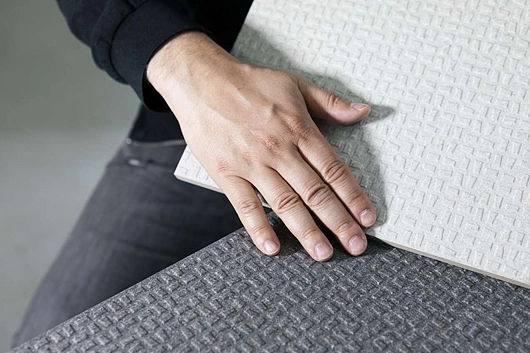
The Grid Surface is available in AGROB BUCHTAL's Area Pro series of ceramic tiles that come in large formats and seven different slip resistance options.



